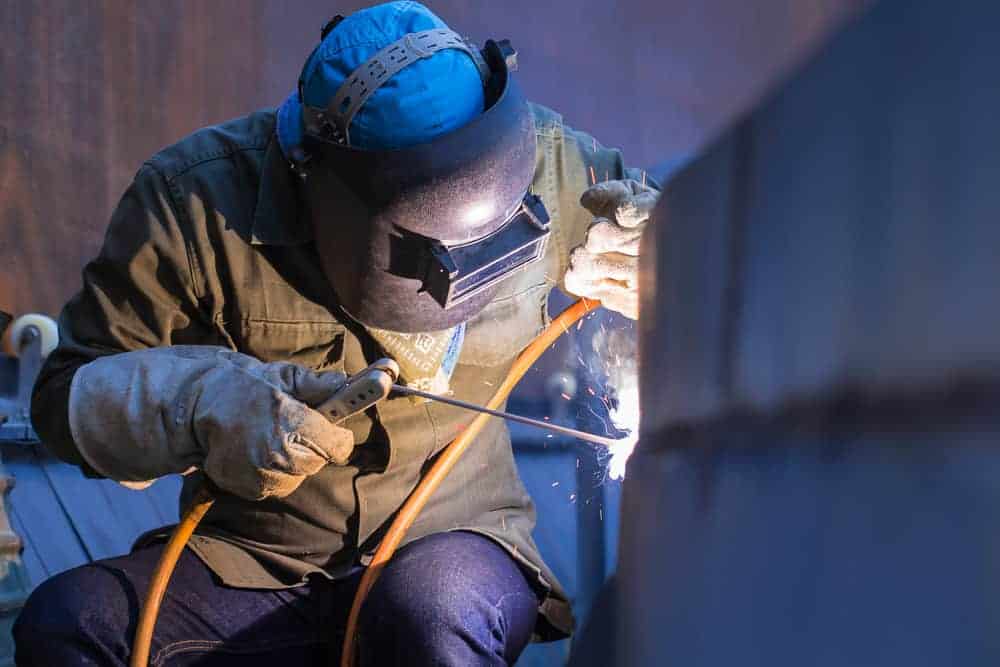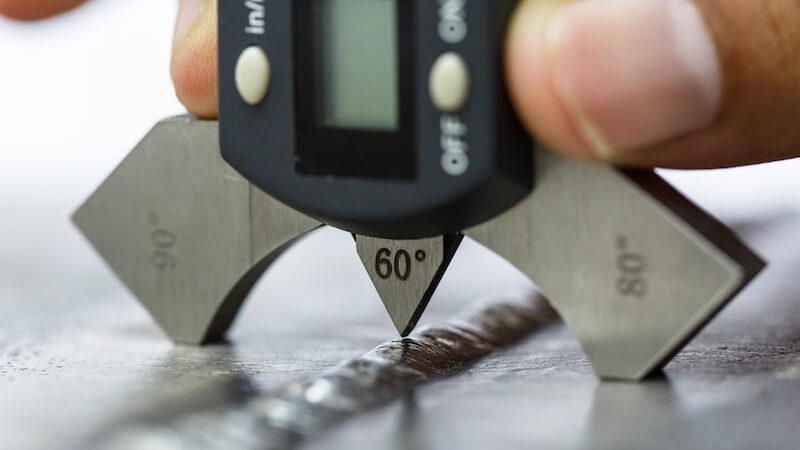Expert Houston Welding Inspection: Ensuring Architectural Stability and Safety
Expert Houston Welding Inspection: Ensuring Architectural Stability and Safety
Blog Article
The Vital Duty of Welding Assessment: Comprehending the Procedures, Equipment, and Specification That Govern Top Quality Assessment in Welding Workflow
Welding examination is a vital element of quality control in welding operations, guaranteeing the architectural stability and safety of welded settings up. By utilizing a range of treatments, from pre-weld analyses to sophisticated non-destructive screening methods, assessors systematically examine weld quality against rigid market standards. The devices used in these procedures is vital for identifying potential defects that might compromise performance. Recognizing the interaction in between assessment approaches and regulative conformity elevates vital concerns regarding the difficulties encountered in maintaining these vital methods. What implications do these elements have on the overall effectiveness of welding operations?
Value of Welding Evaluation
Welding examination is important in guaranteeing the honesty and safety and security of bonded frameworks, as it frequently serves as the final checkpoint before components are put into service. The value of this assessment hinges on its capability to identify possible problems that may jeopardize the performance and long life of welded joints. Provided the high stakes entailed, specifically in markets such as building, aerospace, and automobile, thorough inspection processes are indispensable.
Welding defects can develop from various variables, consisting of inappropriate strategies, poor equipment, or inappropriate materials. Failing to identify these problems can lead to disastrous consequences, including structural failures, which may cause injury, death, and considerable economic responsibilities. Welding evaluation offers a systematic technique to assess the high quality of welds, making certain compliance with market requirements and regulatory needs.
Additionally, effective welding evaluation adds to boosting general productivity by minimizing rework and making sure that jobs continue to be on routine. By cultivating a society of quality control, companies can likewise improve their reputation and customer trust fund. Fundamentally, the value of welding examination can not be overstated, as it plays an essential role in safeguarding both human lives and financial investments in facilities.
Trick Assessment Procedures
An extensive approach to inspection treatments is crucial for ensuring the top quality and integrity of bonded joints. Effective examination starts with pre-weld analyses, that include assessing welding specs, material homes, and joint layouts to determine possible challenges. This prep work phase develops a baseline for quality expectations.
Throughout the welding process, in-process evaluations are critical. Inspectors check criteria such as warm input, travel speed, and electrode angle to make certain conformity with established criteria. Visual examinations are the initial line of defense, making it possible for the recognition of surface issues, such as splits, porosity, or incomplete blend.
Post-weld evaluations involve advanced methods to analyze the honesty of the joint. This might include non-destructive screening (NDT) techniques such as ultrasonic screening, radiographic screening, or magnetic fragment testing. These strategies offer deeper understandings right into the interior framework of the weld, disclosing potential flaws that might not show up on the surface.
Paperwork plays an essential function throughout the assessment process. Thorough documents of evaluations, including findings and rehabilitative actions, make sure traceability and liability, ultimately contributing to continuous enhancement in welding practices and general quality guarantee.
Vital Devices for Assessment
Efficient evaluation relies upon using specific devices designed to review the top quality and honesty of welded joints. Key devices in this process include visual assessment tools, such as amplifying glasses and borescopes, which enable examiners to identify surface area problems and irregularities. Additionally, ultrasonic screening (UT) equipment plays an important function by making use of high-frequency audio waves to find interior imperfections within welds, ensuring that concealed weaknesses are determined prior to they result in failure.
Radiographic testing (RT) is one more crucial approach, making use of X-rays or gamma rays to generate pictures of the welds, exposing inner problems that may not show up via other assessment approaches - Houston Welding Inspection. image source Magnetic bit screening (MT) is employed for ferromagnetic materials, allowing examiners to find surface area and near-surface issues by applying magnetic areas and great bits
Dye penetrant screening (PT) is likewise significant, including the application of a fluorescent color to expose surface fractures and gaps. Each of these methods and devices adds to an extensive evaluation technique, ensuring that welded structures fulfill the required top quality requirements and stay safe for usage in their particular applications.

Industry Requirements and Rules
Quality assurance in welding assessment is substantially affected by industry requirements and policies that control techniques and make sure security. These standards act as standards for quality, detailing the required methods for screening, paperwork, and inspection. Trick companies such as the American Welding Society (AWS), the American Society of Mechanical Designers (ASME), and the International Company for Standardization (ISO) develop guidelines that welding specialists have to comply with throughout the assessment procedure.
Compliance with these standards is not only a matter of regulative commitment but additionally an essential part of threat management in welding procedures. They incorporate various facets, including material selection, welding methods, and certifications of employees. AWS D1.1 outlines architectural welding requirements, while ISO 3834 specifies quality demands for welding procedures.
Furthermore, industry guidelines determine the necessary certifications for welding examiners, demanding qualifications that attest their competence. This placement with criteria makes sure that assessments are executed regularly and precisely, ultimately protecting the stability of bonded structures. Abiding by these sector requirements and regulations is critical in promoting operational performance and maintaining public trust fund in welding methods.
Obstacles in Welding Inspection


Welding inspection encounters various difficulties that can impact the dependability and safety of bonded frameworks. One substantial difficulty is the intricacy of the welding processes themselves, which can vary significantly depending on products, joint arrangements, and environmental conditions. This irregularity requires a comprehensive understanding of diverse inspection methods their website and their suitable applications.
An additional challenge hinges on the evolving nature of welding technology. As new materials and techniques are introduced, assessors need to continuously update their knowledge and skills to successfully examine the high quality of welds. Furthermore, the physical availability of weld areas can hinder examination initiatives, especially in restricted or risky environments.
Moreover, human factors play an essential function in welding evaluation. Houston Welding Inspection. The subjective nature of aesthetic assessments can lead to variances, as various examiners may translate the same weld in a different way. This highlights the value of standard training and accreditation for inspectors to make sure an uniform technique to top quality assessment
Lastly, the assimilation of sophisticated innovations, such as automated inspections and expert system, provides both challenges and chances. While these innovations can boost accuracy and performance, they likewise need significant financial investment and expertise to carry out efficiently. Dealing with these difficulties is important for keeping the stability of bonded frameworks.
Final Thought
Welding examination is crucial for ensuring the safety and honesty of bonded structures. Ultimately, a robust welding assessment structure not just guarantees compliance with laws but likewise enhances general functional effectiveness and dependability. Houston Welding Inspection.
Welding evaluation is an important component of quality guarantee in welding operations, ensuring the architectural honesty and safety and security of bonded settings up.Welding examination is critical in making sure the honesty and security of bonded structures, as it regularly offers as the final checkpoint prior to parts are placed into service. Welding examination supplies a systematic strategy to examine the high quality of welds, making certain conformity with market criteria and regulatory demands.
Quality assurance in welding examination is important link dramatically influenced by industry criteria and laws that regulate techniques and make certain security. Secret organizations such as the American Welding Culture (AWS), the American Society of Mechanical Engineers (ASME), and the International Organization for Standardization (ISO) establish guidelines that welding professionals need to stick to throughout the evaluation process.
Report this page